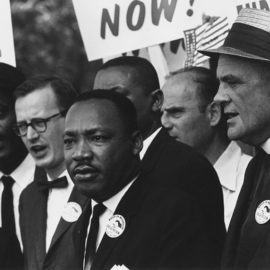

This article is an excerpt from the Shortform book guide to "The Emperor of All Maladies" by Siddhartha Mukherjee. Shortform has the world's best summaries and analyses of books you should be reading.
Like this article? Sign up for a free trial here .
What is palliative care? Why were doctors so opposed to putting cancer patients into palliative care?
Palliative care is designed to provide patients with relief of symptoms and improve their quality of life as opposed to curing the disease. For patients suffering from cancer, palliative care wasn’t even an option until the 1950s. According to Siddhartha Mukherjee, the author of The Emperor of All Maladies, many doctors were opposed to the idea of putting cancer patients into palliative care because it felt like surrendering.
Keep reading to learn about the arrival of cancer palliative care.
Introducing Palliative Care
In the 1950s, an English physician named Cecily Saunders introduced the idea of palliative medicine to cancer treatment: end-of-life care designed to preserve comfort and dignity, rather than cure the disease at any cost.
Mukherjee says that, despite its name, palliative medicine was more of a social advancement than a medical one. Many doctors had refused to even consider cancer palliative care because it felt like admitting defeat; furthermore, many people fought for the slightest chance that their loved ones could be healed, no matter the cost or the impact on the patient. However, Saunders argued that subjecting patients to painful and nauseating treatments with little hope of curing them did more harm than good—that there came a time when doctors and loved ones should let the patient stop suffering and die peacefully.
Saunders opened the world’s first modern hospice center in England in 1967. In 1974, the first American hospice opened at Yale-New Haven Hospital. By the early 1980s, hospice centers based on Saunders’s model could be found all over the world.
| Misconceptions About Hospice The purpose of hospice is to relieve patients’ symptoms and allow them to live out what remains of their lives as comfortably as possible. However, many people aren’t comfortable with the idea of hospice, often because they misunderstand what hospice does or how it works. Here are a few common misconceptions and truths about hospice care: – Hospice is only for elderly people. In reality, people of any age can enter into hospice care. – Hospice must be given on an inpatient basis. In reality, many patients receive hospice care in the comfort of their own homes. – Once you’re in hospice care, you can’t leave. In reality, patients can decide at any time to go back to the hospital or the emergency room. – You won’t be able to see your usual doctor. In reality, hospice works with your regular physician to make sure you receive the best possible care. |

———End of Preview———
Like what you just read? Read the rest of the world's best book summary and analysis of Siddhartha Mukherjee's "The Emperor of All Maladies" at Shortform .
Here's what you'll find in our full The Emperor of All Maladies summary :
- An overview and rough timeline of the fight against cancer
- A look into the more technical aspects of cancer and cancer treatment
- The social aspects of the fight against cancer






